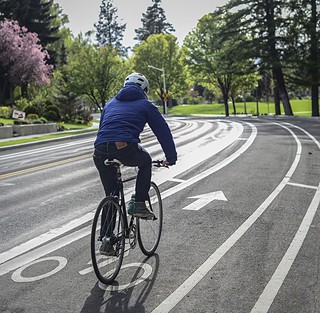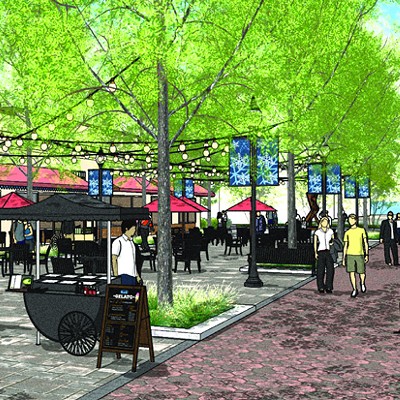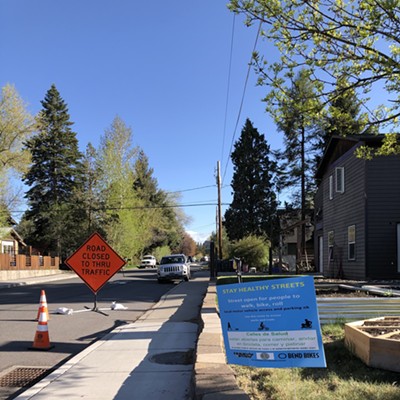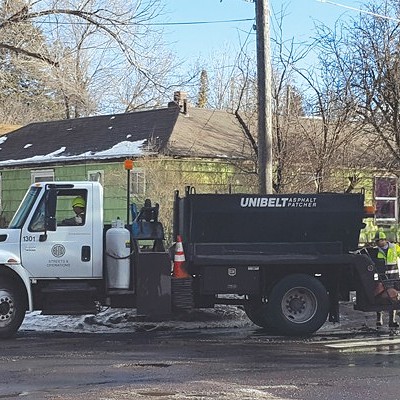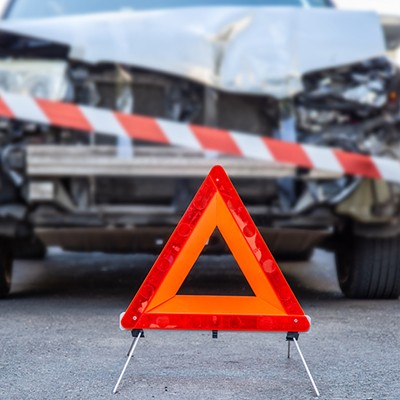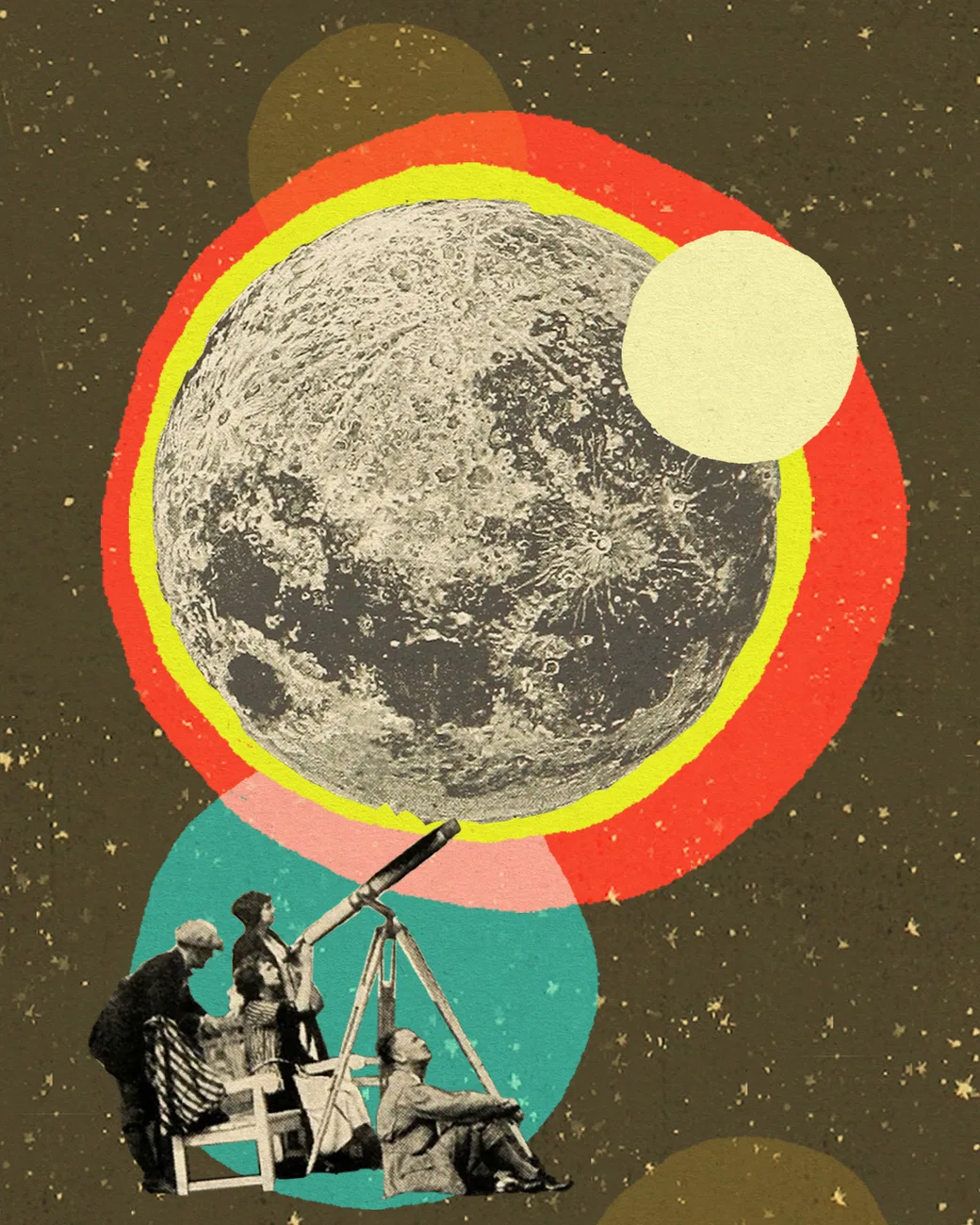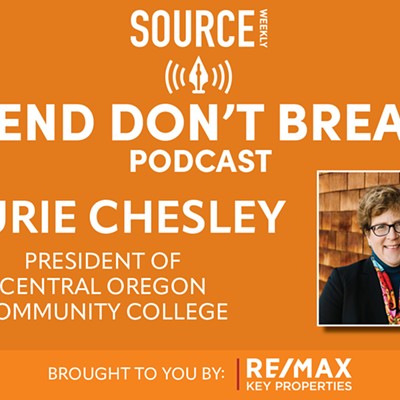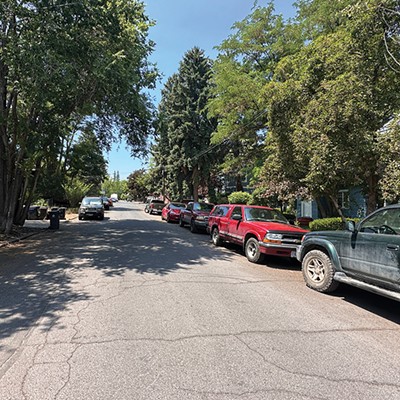Bend has gained a reputation as a "bike town." It even has called itself Bike Town USA.
But is the title deserved?
Well, it depends who you ask.
Mountain Bike Action magazine calls Bend the top mountain biking town in the nation, saying the city "seems like it was founded just for mountain bikers." It praises the expansive and well-maintained trail system, plethora of bike shops, and agreeable weather. A writer for TheActiveTimes.com adds even more flourish to that claim, writing, "Bend is what would happen if you had access to a magic mountain bike wand."
With hundreds of miles of mountain bike trails and a multitude of professional and amateur bike races and competitions taking place in Bend, it is not a stretch to call the city a destination for recreational cyclists.
But what about the locals? And what do we really mean when we say that Bend is a "bike town"?
Biking by the numbers
"From where I'm sitting it's the plethora of great recreational riding that makes Bend a 'bike town,'" explains Central Oregon Trail Alliance Chairman Woody Starr. "If you were to draw a circle around Bend representing a one hour drive to a trail head, I'm told there is over 1,200 miles of trails."
There are no firm figures on the total number of recreational versus commuter cyclists in Bend, but there are some ballpark measurements. Starr estimates—based on counters placed along several popular trails a few years ago that measured 9,000 to 12,000 riders between May 31 and September 1—that the total number of recreational riders is "in the neighborhood of over 100,000."
That number of recreational bikers, however, dwarfs "functional" bikers—those who commute to work or around town by two wheels.
A couple times a year, the Bend Metropolitan Planning Organization does a pedestrian and bike count, stationing either live volunteers or automated counters at popular thoroughfares across town. During the recent January count, volunteers stationed at the Colorado vehicle bridge, the Columbia bridge, the Galveston bridge, and the Franklin bridge from 3:30 to 5:30 pm on the January 15—the only weekday on which cyclists were counted separately from pedestrians—marked a total of 87 cyclists. While that number obviously isn't representative of every bike commuter in the city, it's hard to imagine the number of regular, daily bike commuters is much higher than that. A 2015 DHM Research survey commissioned by the City of Bend found that just 2 percent of respondents said they get around by bike "most days of the week." That's down 1 percent from the responses in DHM's 2013 survey.
Put in perspective, that's higher than the national average—a paltry 0.5 percent, according to the Portland Department of Transportation—but lower than Portland's bike commuting rate of 6 percent.
So, why don't more people commute by bike?
"This is the important question we should be asking," says local attorney Christopher Heaps, who recently joined the board of Bend Bikes, a grassroots group dedicated to promoting bicycling and improving bicycling conditions. "The most important reason is the same everywhere, not just in Bend: Many people do not feel safe riding the routes between work and home. But Bend has even fewer bike commuters than you would expect based on the number of people who ride for fun and exercise on the roads in the area." The biggest factor in bicycle safety is giving riders a space that is buffered from cars—that is, a bike lane. And while Bend does have a growing bicycle infrastructure, the speed of that growth is limited by the City's budget.
Take, for instance, Bear Creek Road on Bend's east side. The road, which starts to feel pretty country once past Purcell Boulevard, is a major connector for bike commuters in SE Bend looking to take advantage of the recently constructed bike lane known as the Franklin-Riverside project. However, heading east on Bear Creek, the bike lane stops suddenly a few blocks after 10th Street. There is no shoulder and cars are frequently traveling faster than the posted 35 mile-per-hour limit. Cyclists are forced to ride the fine, and invisible, line between a gravelly ditch on the right and speeding traffic on the left.
"More bike-friendly road infrastructure is perhaps the most important thing for Bend right now, and I hope we see more projects like the Riverside-Franklin project," Heaps says. "As far as I understand it, Bend is typical of most local governments in that it has to look hard to find the necessary funding for projects like these, so perhaps that's something the community can start focusing more attention on."
All told, Bend's roads include about 160 miles of bike lanes (not including bike lanes on highways 97 and 20, which are managed by the Oregon Department of Transportation), which means that there are likely more miles of single track trails in the area than there are bike lanes. A website dedicated to mountain biking in Oregon, ormtb.com, claims that there are about 300 miles of "continuously linked, legally sanctioned, single track trails" accessible from Bend's west side. On the other hand, depending what side of Bend a commuter starts from, there may be no bike lanes at all.
A look at the Bend Urban Area Bicycle and Pedestrian System Plan Map (circa April 2014) depicts a colorful network of bicycle lanes and shared roadways, but it also shows a web that is far from completely interconnected. Dotted lines on the map indicate the site of future lanes and roadways—like that stretch of Bear Creek Road past 10th Street—and are roughly as plentiful as existing bike lanes and shared roadways.
City Councilor Nathan Boddie gets it. Though he lives on the west side, he says he bike commutes to his day job as a doctor at St. Charles, on the east side, weather permitting. Still, he recognizes that, as a pretty hardcore recreational cyclist who loves being on his bike, he's willing to face more obstacles than the average commuter.
"Unless someone lives right next to their job, commuting involves riding from one part of Bend to another. Sadly, our town is sliced up in a very bicycle unfriendly way by roads and traffic corridors," Boddie explains. "If we want to encourage more people to ride, which will keep more cars off the road and encourage a healthy population, then we need to develop bicycle corridors similar to Portland."
What needs to change? "To me, the term 'bike town' means that the average person is just as likely as not to get on a bike to go somewhere local," says local attorney Heaps. "By that definition, Bend is not a bike town, yet. But I think people want it to be."
Heaps says he rides around town frequently, but admits he has it easy. His life is set up for easy bike commuting—he made the decision to live just a mile from his office and owns all-season bike gear. What he wants to know is what would make it easier for others to commute by bike, and how to transform that desire for a more bike-friendly Bend into tangible action.
"I think the City of Bend is asking all the right questions; namely, how can we encourage more folks to choose active, healthy transportation," answers Lucas Freeman, president of Bend Bikes. "Bend will only succeed in implementing some of its grandest ideas for change if it can better engage its populace regarding the benefits of active transportation: lower transportation infrastructure costs, increased community health, better air quality, a connection to the outside world, and loads of others."
Bend Bikes is working to change that mentality, but it's an uphill climb. To get there, it takes a two-pronged approach—promoting a bicycle commuting culture through activities such as family-friendly community rides, and also helping City staff and policy makers understand the state of bicycle infrastructure in Bend.
While it's easy to say, "If you build it, they will ride," it's not entirely accurate. Barring extreme measures such as a massive gas tax, it will take more than bike lanes to get people interested in commuting on two wheels.
"When we hosted a ride last year with four city councilors in attendance, we rode from downtown on Franklin/Riverside along Drake Park. It was a real eye-opener for some," Freeman says. "We went from riding along with no bike lane and having cars squeeze uncomfortably close, to riding in a buffered bike lane. World class bicycle infrastructure goes from being nice-but-unnecessary, to being required after it is experienced first-hand."
Translation: Who do we need to get on a bike to get some lanes around here?

